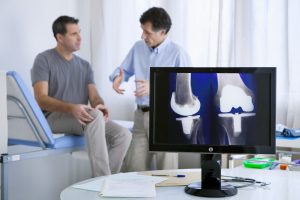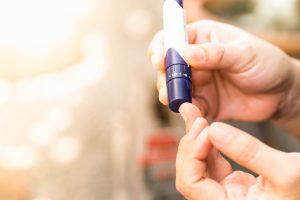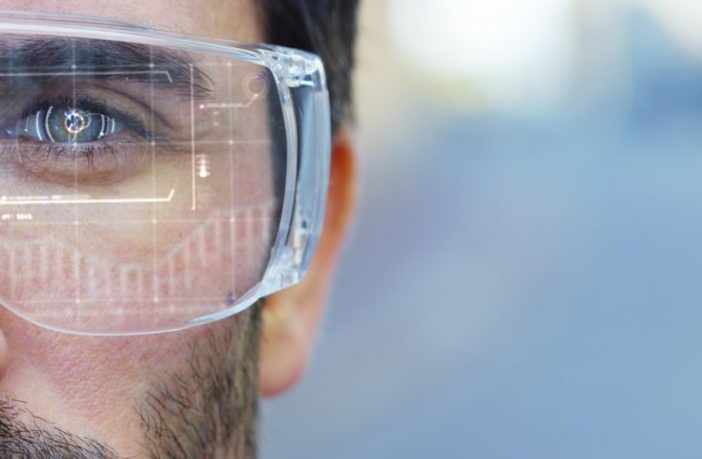For the past 15 years Professor Blaine Price has sported every smartwatch and digital health wearable device imaginable, earning him the nickname of ‘Inspector Gadget’ at home.

Blaine Price, Professor of Computing
He has always been active but found that since coming to the UK, he had gained a little bit of weight. Using his personal data from the past seven years of wearing a fitness tracker, he could see the trend that every winter his activity levels would dip (despite him thinking he had been active) – the British weather would put him off longer runs or even going running at all. He could see his weight fluctuated seasonally as a result. There was a simple solution to this – he bought warmer running gear and now runs all year round.
Professor Price is fascinated by digital health wearables and in his Inaugural Lecture, which you can watch here, he explored the future use of these devices for us personally, for animals, and for the healthcare service. He said:
The smartphone you carry has loads of sensors; and most people carry a lifelogging instrument with them most of the time. It’s cheap and easy to get data on your lifestyle and health, but single measures are useless – you need to keep measuring for a longer period to see trends. Automatic long-term collection lets you find out what is normal for you.
In his lecture, Blaine Price touched on seven projects which are set to use digital wearables to transform health issues, improve lives and even tell us whether cats like wearing activity monitors:
1. They can help you recover from joint replacement surgery
 In 2016 there were around 160,000 hip and knee replacements in England and Wales. For many there are no problems afterwards, but 1 in 5 people will still experience pain a year after knee surgery.
In 2016 there were around 160,000 hip and knee replacements in England and Wales. For many there are no problems afterwards, but 1 in 5 people will still experience pain a year after knee surgery.
Blaine is leading a project with Milton Keynes Hospital, working with an orthopaedic surgeon, to monitor 35 knee replacement patients and analyse their personal health data. The patients are given a Fitbit two weeks before surgery and for six weeks after the procedure, and their personal data is analysed to give them personalised advice about how active they should be. This helps to optimise their recovery, improve outcomes and guide their behaviours post-surgery.
2. They can help with pain relief
Pain is an individual experience, and with nurses under pressure it is hard for them to monitor everyone closely. The PainPad, a device designed by the OU, enables patients to monitor their pain themselves. They rate their pain every few hours on the device, and this data is analysed and live ‘pain graphs’ sent to the nurses station so they can see if pain is increasing and administer pain relief if required.
3. Older patients can leave hospital quicker with digital devices
Older adults spend more time in hospital than they need to, creating a ‘bed blocking’ crisis. Arranging the right level of care at home can be difficult, but with smart technology and wearable devices patients can go home sooner, and connect with a ‘circle of support’ of friends, families and healthcare professionals such as their community nurse or GP. The digital wearable gives a patients support community the right information so they can monitor their progress and intervene if necessary – for instance, they may see that person isn’t drinking enough water, or not moving enough.
4. They can help diabetics manage their day
 Diabetes is a serious problem and those suffering with the condition have to make many complex calculations throughout their daily life to do ordinary things such as eat and exercise. Diabetics now have the capacity to get proactive advice throughout their day to help them manage their condition effectively.
Diabetes is a serious problem and those suffering with the condition have to make many complex calculations throughout their daily life to do ordinary things such as eat and exercise. Diabetics now have the capacity to get proactive advice throughout their day to help them manage their condition effectively.
5. Correcting how you walk
Many medical conditions cause a person’s gait to change. Learning to walk properly again can be difficult and result in unsymmetrical walking.
OU PhD student Theo Georgiou is working on a project to use the sensors in a smartphone to measure gait asymmetry. It actively taps a rhythm on a person’s wrist (via a smartwatch) or via the phone itself, to show them the speed they should be moving their legs, helping them walk properly again
6. The privacy band can help you control your data
OU researchers have developed the ‘privacy band’ – a wrist worn device which alerts you to data being accessed. Rather than intrusive alert notifications it gives you an itching sensation and the pattern of this dictates what exactly is being accessed. Users can make a decision to release data or lock it down simply by the way they scratch their arm! This new device recently won an IET Innovation Award for Cyber security.
7. Wearables aren’t just for people
 The concept of putting activity trackers on animals isn’t new as it’s already widely used to monitor wildlife. However, to date researchers have known very little about how animals feel about wearing these devices to help with research, and issues such as poor wearability can mean bad data. OU researcher Patrizia Paci is helping measure the comfort of these devices on animals. She has already found that cats scratch a lot more when they are wearing an activity tracker. Her work could help to improve the design of animal activity trackers, and ultimately help researchers get better data when they are tracking wildlife, livestock and other animals.
The concept of putting activity trackers on animals isn’t new as it’s already widely used to monitor wildlife. However, to date researchers have known very little about how animals feel about wearing these devices to help with research, and issues such as poor wearability can mean bad data. OU researcher Patrizia Paci is helping measure the comfort of these devices on animals. She has already found that cats scratch a lot more when they are wearing an activity tracker. Her work could help to improve the design of animal activity trackers, and ultimately help researchers get better data when they are tracking wildlife, livestock and other animals.
Find out more: The dos and don’ts of online privacy.



